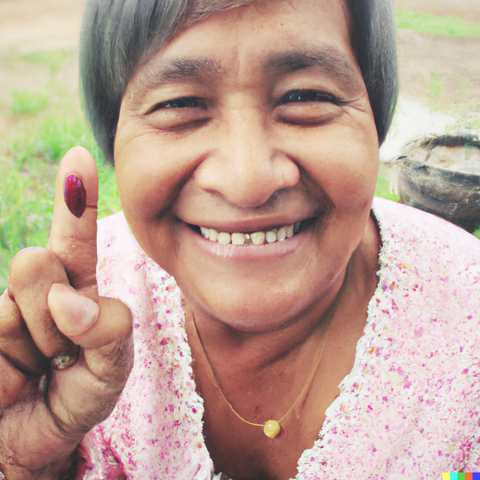
We wanted to know if DALLE2 can count and prepared some simple demonstration prompts. The first DALLE2 prompt was:
> “one”

As seen in the image above there is one women shoing two fingers, a rather unexpected and amusing result (by the way it seems, some fingers are missing). There seems to be a pattern involved, as in the results the two fingers can appear once in a while (images below).
 |  |
To provide the more complete big picture, other prompt results can be pretty accurate, at least for the special case of “one”:

And, after some generation cycles we also get results which show what was expected.

Nevertheless our personal favorite is the following result:

What about other numbers below and including 10?
DALLE2 prompt:
> “five”

DALLE2 prompt:
> “three”
As shown below, this actually returns landscapes and parts of trees, maybe this is due to the spellling issues in the original data. The results we get are reproducable.


DALLE prompt:
> “six”
In this case, there do not seem spelling mistakes – or if there have been spelling mistakes in the underlying data these were cleaned. Well the results are pretty mixed ranging many to 8 and 3.

What about zero, as prompt:
> “zero”
Our results here are generally consistent with the explainations (i.e., see Aditya Ramesh explainations as creator of DALLE und co-creator of DALLE2). isn’t “incentivized to preserve information about the relative positions of objects, or information about which attributes apply to which objects.” This means it may be really good at creating images with objects that are in the prompts, but not at correctly positioning or counting them.

Finally you may ask yourself why do not use actual numbers: 1,2,3,1000 – of course an input is possible. Well you can try it yourself or wait for our next post.
DALLE2 generation: September 2022
Author: dalle&me / ‘-(+.-)-‘